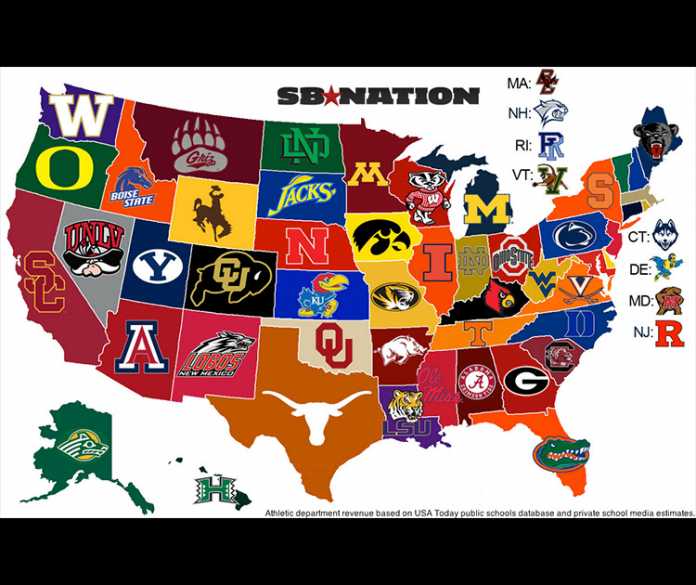College athletics. I always reserve one question about college athletics for the student-athletes I interview. Playing in college is a goal for most of the kids I talk to. Many have had their sights set on a college scholarship from their elementary school days. Playing in college is a tremendous honor, and all sports fans, whether consciously or not, hold tremendous respect for college athletes.
Interestingly, the concept of college athletics is almost entirely American and not something you’ll find in most other developed countries. If you study the education system of other nations, you’ll find that it designed to educate, not entertain. In the United States, however, colleges and universities are in the business of entertaining the masses. And they do so through athletics.
I find college sports to be an interesting beast. First of all, let me state that I am a huge fan of college athletics. I follow a few professional teams, but for the most part, I enjoy college sports far more than I do the pros. I think college sports provide opportunities for kids who otherwise wouldn’t be able to attend school and better themselves.
At the same time, however, college athletics aren’t about education. They’re not about opportunity. They’re not about breaking cycles of poverty or any of that. It comes down to, quite simply, money. At the major college level, the money comes from merchandise and television contracts for broadcasting games. Television contracts for the college football playoff and the NCAA basketball tournament are in the billions. That’s right – billions.
At the small college level, athletics often mean money for the institution in terms of increased enrollment. The progressive colleges and universities know this and use athletics as an easy way to grow the institution. I’ve said it many times before, and probably in this very space, that football transformed not only then-Georgia Southern College, but also the entire region around Statesboro. Now Georgia Southern University and home to a Division I football program (that nearly beat the hapless Georgia Bulldogs this year on Senior Day in Sanford Stadium), it must be stated that none of that would have been possible without a championship football team. Along with the growth of the community came the growth of the college/university. The number of students increased. The median grade point average rose as well. It was a win-win for everyone involved.
However, college athletics are not without their issues. First of all, the NCAA is itself a difficult organization to define. Officially, it’s a not-for-profit, non-taxed entity. In spite of that, according to a 2014 article that appeared in The Columbus Dispatch, the NCAA showed a $61 million surplus two years ago. When you’re dealing with that kind of money, there are bound to be problems – for both the governing body and the schools. Most of us don’t know what goes on behind closed doors regarding these major-college sports programs. But where there’s money, there’s corruption. And when it comes to the NCAA, there is A LOT of money floating around.
There have been calls for a change in the way college athletics are structured. Several people have traveled to Europe to study how their nations develop elite-level athletes. Sports are big across the pond, as it is just about everywhere. But European countries use club teams and various levels of professional leagues to develop national- and international-caliber talent. It’s an interesting model, one that completely separates education and athletics.
That will never happen in the United States. College athletics are ingrained in our society and in our colleges and universities. But I believe changes need to be made. The NCAA operates under the guise of amateurism and love of sport. Nothing, however, could be farther from the truth. It’s a money-making organization, and it’s making gobs of money at the expense of student-athletes who, in many cases, can barely afford to survive while at school.
The marriage between education and athletics has always been an interesting – and rocky – one. There is plenty of room for improvement in how college sports are sanctioned and governed. However, despite our best efforts and intentions, I don’t believe that significant reform will take place. There’s just too much money being made for that to happen.
Column/South Georgia/January 2016
The Myth(s) of College Athletics
Robert Preston Jr.
Photography:













